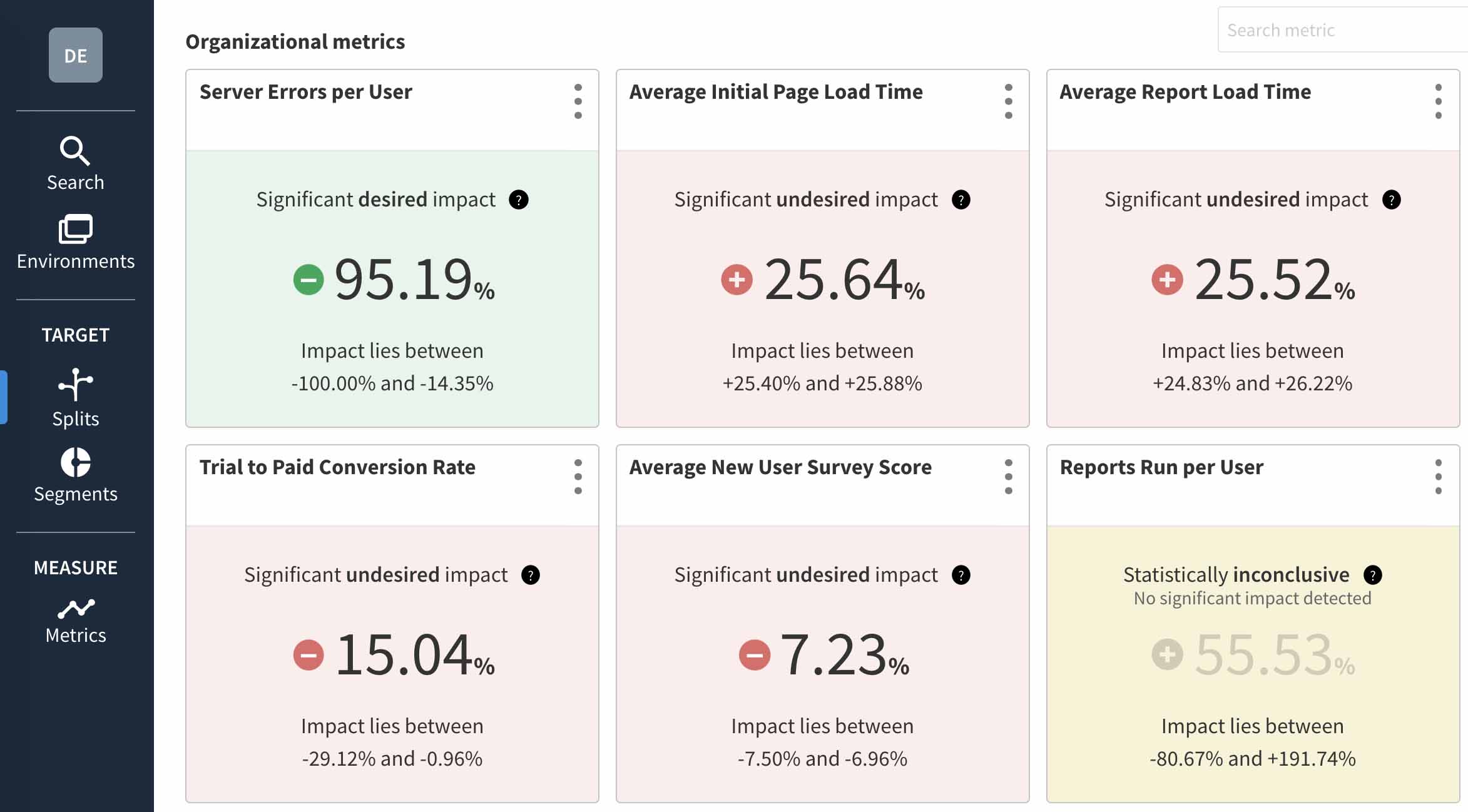Split Builds in Two-Way Integration with Google Analytics; Move Aims To Reduce Software Development Risks
Split Software ‘s feature delivery platform is adding bi-directional integration with Google Analytics. The move aims to add visibility and cut risks in app development and DevOps.
Split Software ‘s feature delivery platform is adding bi-directional integration with Google Analytics. The move aims to boost visibility and cut risks during app development processes, including DevOps.
With Google Analytics integration, Split will be able to “instantly detect performance issues caused by new features,” according to Trevor Stuart, head of product and co-founder at Split. This integration, includes the ability for Split to ingest data from and export data to Google Analytics, is unique to Split, he added.
The idea is to pair web performance data from Google Analytics with Split’s feature flag data, Stuart explained. The result is that engineering teams can capture a more direct and instant understanding of how key service level objectives – such as page load time – are impacted by each new feature they release.
The Split Feature Delivery Platform aims to deliver engineering teams a collection of capabilities to accelerate feature delivery. It provides fine-grained management, real-time monitoring, and data-driven experimentation – all to help developers and engineers ensure that new features won’t break or degrade performance.
Split ingests performance data and runs real-time statistical analyses on every new feature so that engineering teams can respond immediately to bad releases, measure changes in user experience, and build high-quality software.
Stuart explained how two-way integration impacts how teams work to leverage fast data for day-to-day tasks. Users can:
- Send web performance, conversion and business data from Google Analytics to Split to understand the impact of new features
- Use average revenue per cart to see if a new feature improves business outcomes
- Send a record of every feature flag in Split – called an impression – to Google Analytics for segmentation analysis
- Send feature data from Split to Google Analytics to segment
- Instantly kill any feature in Split that causes a degradation in performance indicators measured by Google Analytics
In short, thanks to the Split tie-in to Google Analytics, Split users won’t need to track data a second time, Stuart said. Instead, they can measure the impact of every feature shipped to customers using web performance data already collected in Google Analytics.

More Benefits to Split’s Integration with Google Analytics
Additionally, companies can run experiments or A/B tests that prove which features drive the best results for the business. Using Split’s javascript SDK, teams can automatically collect Google Analytics metrics instantly as a user is browsing their website. Other product capabilities include:
“The strength of Split’s platform is the power to measure performance and outcomes of feature flags. Through our integration with Google Analytics, we are helping businesses to respond faster to any issue that may impact the customer experience,” Stuart said. “By closing the feedback loop from the features built, development teams deliver quantifiable customer and business value.”
Notably, Google Analytics is used by 86 percent of top websites to report on web analytics, including performance and business metrics.
In another sign Split believes in data-driven development, The company also announced a pre-built integration with mParticle, a customer data platform for enterprise B2C brands “Our vision for the Split platform is to make feature delivery an informed and data-driven part of the enterprise by connecting development teams to other lines of business through these integrations,” Stuart noted
mParticle allows for the centralization, management and activation of customer and engagement data across any channel. Split’s mParticle integration can be used as an event input or feed output. It will also help companies create high-impact customer experiences by closing the feedback loop from every feature they ship to customers.
The latest integrations build on Split’s recent addition of “feature flags” to the approval process via its ‘Enterprise Approval Flows’ capability. It aims to ensure that changes made by engineering teams comply with policy and audit requirements by providing teams with greater control and insight into the full release process.
With Split’s Enterprise Approval Flows, teams can
Request that individuals and groups receive email notifications on submissions, approvals, withdrawals or rejections.
Review or comment on production changes and view full audit information about the submitter, the approver or the current status of a change.
View all past and pending changes per environment.
“Using the new Enterprise Approval Flows capability makes it simple for development and operations teams to see why a change was made and bring the entire organization in lock-step with the release process,” said Split's chief strategy officer Adil Aijaz in a statement. "This type of innovation enables SOC2 compliance and is invaluable to improving the user experience.”







